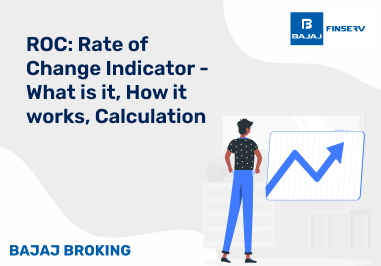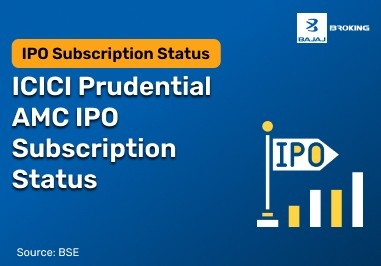If you operate a restaurant or plan to dine out, understanding the GST rules for restaurants is essential. The introduction of the Goods and Services Tax (GST) unified several indirect taxes, including VAT and service tax, into a single tax structure. This shift impacted the restaurant industry significantly—affecting pricing, input credits, and compliance obligations. Whether you run a quick service outlet or a fine-dining establishment, your GST obligations depend on factors such as location, service type, and annual turnover. With varying GST rates on food and restaurant services based on these parameters, staying informed helps you manage both your costs and customer expectations. As a restaurant business owner or diner in India, understanding GST on food is not just a regulatory necessity but also useful for day-to-day decision-making. Let us break down the GST on restaurants, its past rules, current rates, ITC eligibility, and what it means for your operations.
What Were the Original Gst Rules for Restaurants?
When GST was introduced in July 2017, the rules for restaurants were categorised based on service type and registration status. Initially, the rates and Input Tax Credit (ITC) benefits were available to all restaurants, creating uniformity. However, revisions soon followed due to industry feedback and government decisions.
Here is a breakdown of the original GST rules for restaurants when the regime was first implemented:
Criteria
| Original GST Rule Description
|
Composition scheme
| Restaurants with turnover below ₹75 lakh could opt for this and pay a flat 5% GST without ITC.
|
Regular scheme
| Restaurants outside the scheme charged 18% GST with full ITC eligibility.
|
Air-conditioned restaurants
| Charged 18% GST regardless of turnover, and allowed ITC under the regular scheme.
|
Non-air-conditioned restaurants
| Charged 12% GST, with full ITC under the regular scheme.
|
Outdoor catering services
| Attracted 18% GST with ITC availability due to the service-based nature.
|
Mixed services (e.g., hotel dining)
| GST was based on the declared room tariff, affecting the overall rate for food and beverages served.
|
ITC provision
| Allowed for all restaurant types not under the composition scheme.
|
This initial framework reflected a more inclusive ITC structure and higher GST rates than those applied later.
Gst Rates Based on Restaurant Types
Since its rollout, GST on restaurants has seen multiple updates. The current GST rate on restaurant services depends on the type of establishment and whether it is part of a hotel or a standalone. These revisions aimed to simplify compliance and make tax calculation easier for restaurant owners.
Here is how the GST rates are categorised based on restaurant types:
Restaurant Type
| Current GST Rate Description
|
Standalone restaurants (non-AC or AC)
| Charged 5% GST without ITC. This applies to all standalone restaurants not within a hotel premises.
|
Restaurants within hotels (room tariff < ₹7500)
| Also taxed at 5% without ITC, similar to standalone outlets.
|
Restaurants within hotels (room tariff ≥ ₹7500)
| Attract 18% GST with ITC eligibility. The rate aligns with high-end service brackets.
|
Outdoor catering services
| Charged 18% GST with full ITC benefit. Considered a supply of service rather than food retail.
|
Cloud kitchens and delivery services
| Attract 5% GST without ITC. Applies even without physical dine-in premises.
|
Composite supply with banquet or room booking
| Taxed under higher slabs depending on the principal service (e.g., banquet, accommodation).
|
These categories ensure GST compliance is aligned with business size and service complexity.
Input Tax Credit (Itc) Eligibility for Restaurants
Input Tax Credit (ITC) allows businesses to offset the tax they pay on inputs against the GST collected from customers. For restaurants, ITC eligibility has been a topic of debate and regulatory updates. Initially, ITC was allowed widely, but the 2017 revision restricted ITC for those under the 5% slab to streamline tax administration.
If your restaurant is under the 5% GST rate, you are not eligible to claim ITC. This applies to most standalone restaurants and those in hotels with tariffs under ₹7500. However, if your restaurant charges 18% GST (such as those in premium hotels or offering outdoor catering), you may avail ITC. This distinction is important because it impacts how you price your menu and manage procurement. Without ITC, operational costs could rise, influencing your pricing strategy and overall profitability. You should consult a tax advisor to confirm your ITC status under current rules. Additionally, using a GST Calculator can help you better understand the tax component on your bills and plan pricing more effectively.
GST Compliance Requirements for Restaurant Businesses
Restaurant businesses must meet specific compliance obligations to follow the GST rules for restaurants. These responsibilities ensure transparency, accurate tax filing, and proper tax credit management, depending on the GST rate on restaurant services applied.
Before diving into the list, it is important to note that GST on restaurants has streamlined reporting, but it still requires attention to detail for documentation, filing, and registration. These requirements can vary depending on the GST rate on food, ITC eligibility, and type of service provided.
GST registration is mandatory
If your annual turnover exceeds ₹20 lakh (₹10 lakh in special category states), you must register under GST. This threshold determines whether your restaurant needs to follow GST filing norms and submit returns regularly.
Issuing proper tax invoices
Restaurants must issue invoices that clearly mention GST rates and breakdowns. This applies even to food delivery or takeaway services and helps customers understand the tax applied on food bills.
Timely GST return filing
Businesses must file monthly or quarterly returns (GSTR-1 and GSTR-3B). Non-compliance may attract penalties or loss of input credit for eligible categories.
Maintaining digital records
Restaurant owners should store invoices, input bills, and transaction records digitally. These may be required during audits or reconciliation.
Display of GSTIN at premises
The GSTIN must be visibly displayed at all restaurant outlets. This is a mandatory compliance requirement and improves trust among diners.
Impact of Gst on Restaurant Pricing and Operations
GST on restaurants has influenced how establishments price their food and structure their services. The switch from a multi-tax regime to GST removed cascading taxes like VAT and service tax but introduced its own pricing complexities. For instance, while a flat 5% GST brought uniformity, the denial of ITC impacted profitability.
Without ITC, restaurants must absorb the tax on inputs such as raw materials, packaging, or interior costs. This often leads to higher operational expenses and indirectly increases menu prices. Restaurants must also manage billing software, update invoices as per GST format, and maintain monthly filings—adding administrative load. Furthermore, clarity in GST rates on food depending on service type (e.g., dine-in versus delivery) influences pricing strategies. You may have noticed how some restaurants charge slightly different prices for online orders versus dine-in service—this reflects compliance alignment. Overall, GST has rationalised taxes but added new operational nuances.
Conclusion
GST on food and restaurants continues to evolve as policy changes respond to industry dynamics. Whether you are a diner or a business owner, understanding the GST rules for restaurants can help you interpret invoices better or manage your business efficiently. With different slabs, ITC limitations, and strict compliance protocols, restaurant owners need to stay updated to avoid penalties and maintain transparency. By keeping track of the GST rate on restaurant services relevant to your establishment type, you can manage both operations and pricing more confidently. Make sure to verify the latest government notifications regularly.














